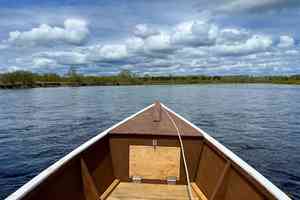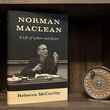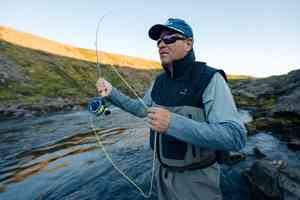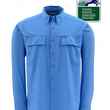“There has been a decided tendency in recent years toward rods which are stiffer and faster in action than those of the past.
To a great extent this is a good thing, as the rods of twenty or thirty years ago were apt to be too slow and soft. But as frequently is the case, a movement away from one tendency has swung too far in the opposite direction. With the advent of the stiffer rod, lines necessarily have had to be increased in weight.”
This quote pretty much sums up the status of the graphite fly rod market in 2020. The majority of the rods made today are generally too stiff for their intended use, resulting in a number of detrimental consequences. Perhaps the most significant are a lack of feel when casting ordinary fishing distances, and the excess physical effort it takes to make these rods perform at those distances because of their refusal to load.
In an attempt to offset this development, fly line manufacturers have actually been increasing the weight of their lines—in essence taking 5-weight lines and renaming them as 4-weights, taking 6-weights and calling them 5-weights, and so on. (Heaven forbid that we call out the rod companies on this matter; after all, they’re the ones trying to con us into believing a 6 or 7-weight rod is actually a 5-weight. But of this, more another day.)
The great irony here is that these developments represent nothing new. The statement I’ve quoted above wasn’t penned yesterday, last month, or even last year. It’s from 1951, was written by John Atherton, and appears in his book The Fish and the Fly. Yes, seventy years on, we find ourselves once again pounding well-trodden ground.
It’s been said that history repeats itself. With respect to flyfishing, in my estimation, there’s little doubt that it does—and that’s not always a good thing.
































Comments
Chris Z replied on Permalink
Not sure I agree with this article, I have bought the new Sage Trout LL and Loomis Asquith rods in past year and load nicely in close with a standard weighted line. Also the Douglas G seems to be quite popular which is a fairly soft rod.
Billy replied on Permalink
I agree. I feel that this article is about 3 or so years too late. There are definitely plenty of fast action offerings out there, but many rod companies are trying to add some "feel" back into their line up. In addition to your examples: NRX LP, Scott G Series, Helios 3F are all marketed as rods with more moderate actions.
Pat replied on Permalink
Yep. Would you buy a new $1000 rod if you sucked at casting it the same as you do with your $99 rod? Overlining rods is a quick way to become a better caster.
Alan Reyes replied on Permalink
The over stiff rods that require overweight lines makes buying line for regular rods difficult.
For any rod 5 weight and down that a person is going to use in regular trout fishing throwing both dries and nymphs, I recommend buying Cabellas/Bass Pro or TFO as they are designed to actually fish. The big dollar manufacturers sell rods for real trout fishing but they are all about extremes of either way too stiff or too soft . Unless you carry a golf bag of rods when you wade , having a rod that only fishes dries but is too soft to fish nymphs (or vice versa) is silly. I have seen videos of people actually carrying multiple rods while wading. Are guides to be rod caddies now?
Jim replied on Permalink
That is 1 reason why I love my old Sage SLT 5wt. It is softer and loads beautifully. On the other hand, my Sage RPL 6 is a lot stiffer. Good for streamers and weighted nymph rugs, but not so much for small drys.
Art Strauss replied on Permalink
Tom Bell of Sunray Flyfishing (UK) has taken a different approach - Super lightweight small diameter fly lines matched with lightweight responsive rods. If presentation is important to you while maximizing distance when needed then this combo is for you. We
Richard Frank replied on Permalink
I think we’re moving past the faster is better trend than that started in the nineties, but it’s just led to a new problem: “What do we do now to sell more rods?” We’ll, the answer is an old one: “Make something up. Claim you have a fabulous new material. Introduce a new taper or two. There’s always tweaking the cosmetics.” At seventy I went in a different directions. I took casting lessons from an excellent teacher and worked my butt off for three months. I really got to know one rod and I still fish it 90% of the time. The rod market wants you to believe a new model will make you a better caster. It won’t. A good teacher and a lot practice will.
Lee Ashton replied on Permalink
Not all rods are like that but some are. If a rod doesn't cast well with the line size stated on the blank, I don't buy it. I'm going to say something controversial now... I owned an Orvis Recon (mark 1) and hated it. The blank was thick and it lacked feel, I ended up overlining it and ultimately sold it. If I'm in the market for a 5wt I don't want to end up with a 6wt.
Mark Hoffman replied on Permalink
An observation of the title photograph for the article : only the reel is in focus and the rod is bokeh-ed to smithereens ... is there a message in that?
JOSH FRIEDMAN replied on Permalink
Yup, slow rods and vests coming back.
Jon B. Tobey replied on Permalink
This article is a prime example of the confusion a lot of fisher people have about rods. They don't understand the difference between a rod's power, action, and speed, and often commingle the terms. For the geeks in the crowd, this is a mass-spring-dashpot system, as is a car's suspension and many other things we are familiar with.
In 2002 the Common Cents System was developed to objectively determine these aspects of any fly rod and their is a large database for blanks on line. If you know these numbers you can easily map them to the correct line size, as well as understand what you like about a given rod.
Unfortunately, while it is easy to use, most manufacturers have not adopted it. The only blank manufacturer I'm aware of who provides these numbers is Rodgeeks. North Fork Composites shows graphs of their rods bending, but the applies the wrong terms to describe what's happening. If your rod is not in the database, you can easily do it yourself. It might be a fun exercise for a club.
Here is a primer from the CCS site.
https://www.common-cents.info/CCS_basic_Layout_1.pdf
Pages